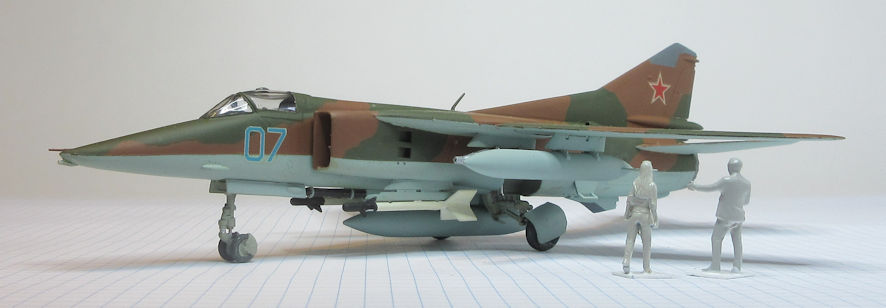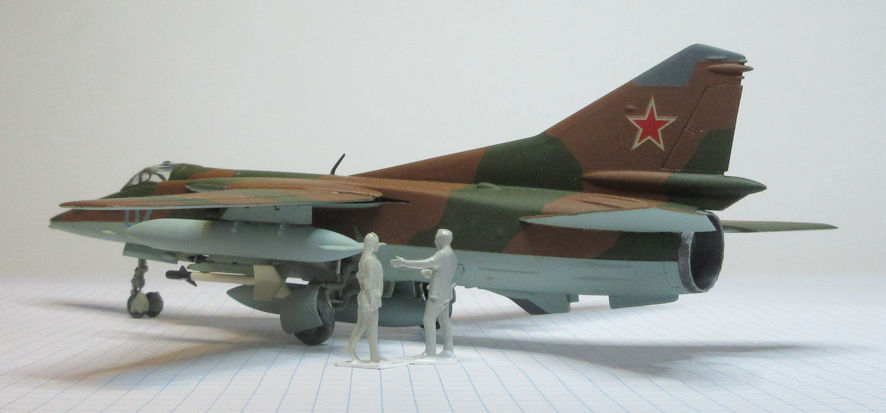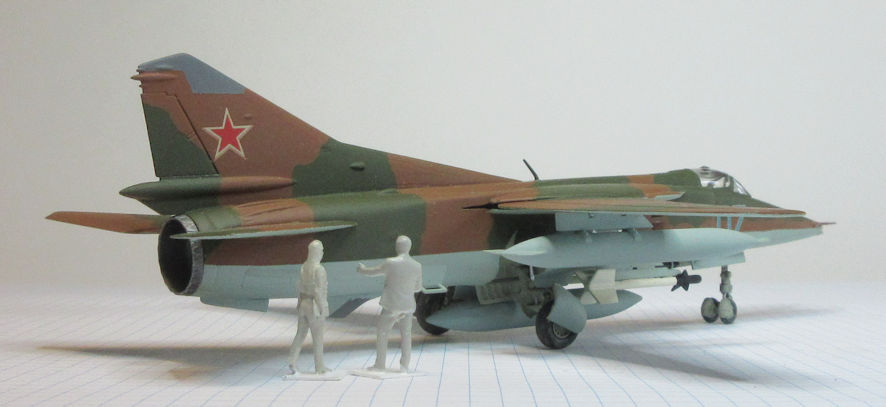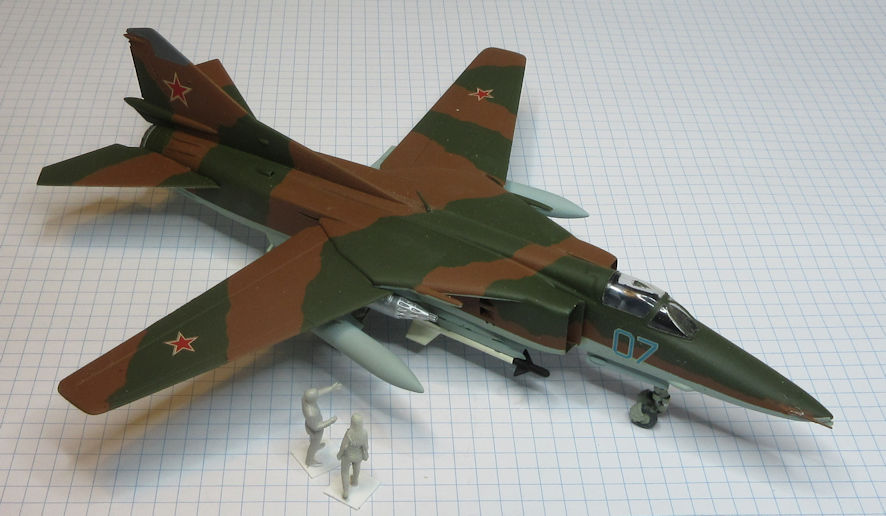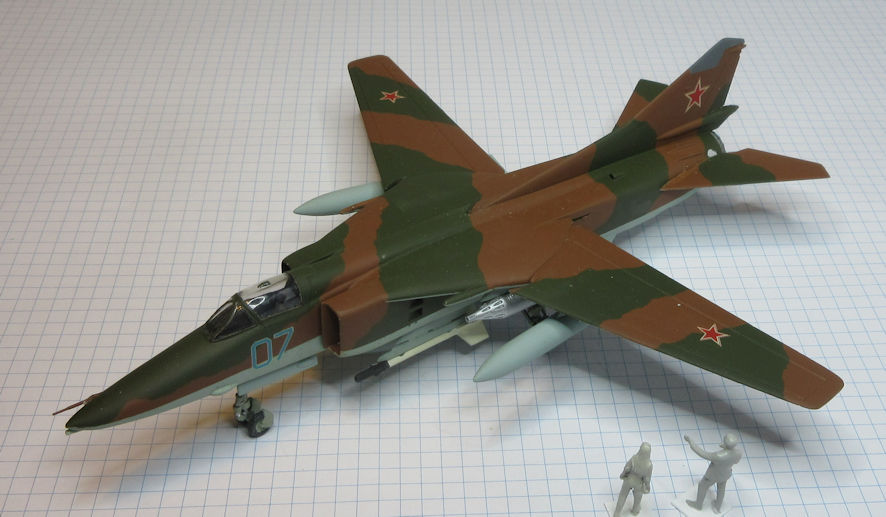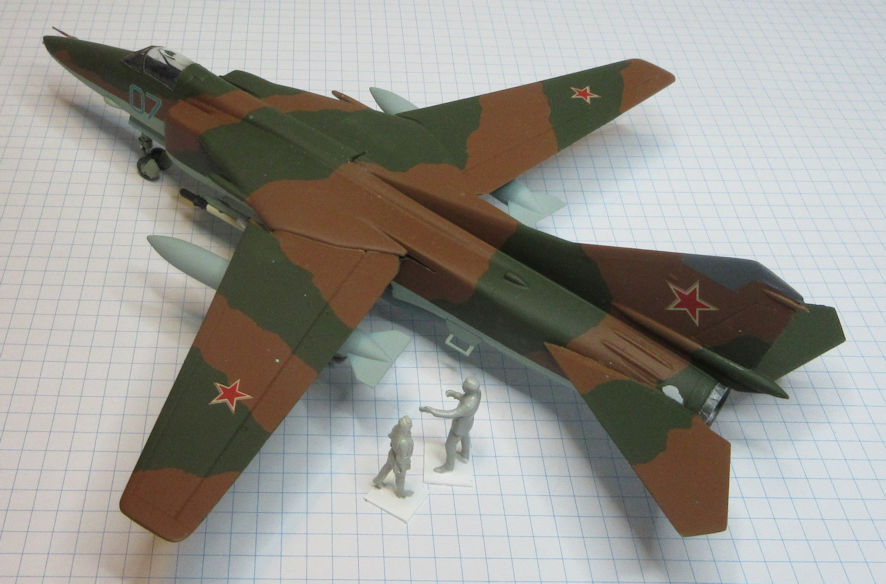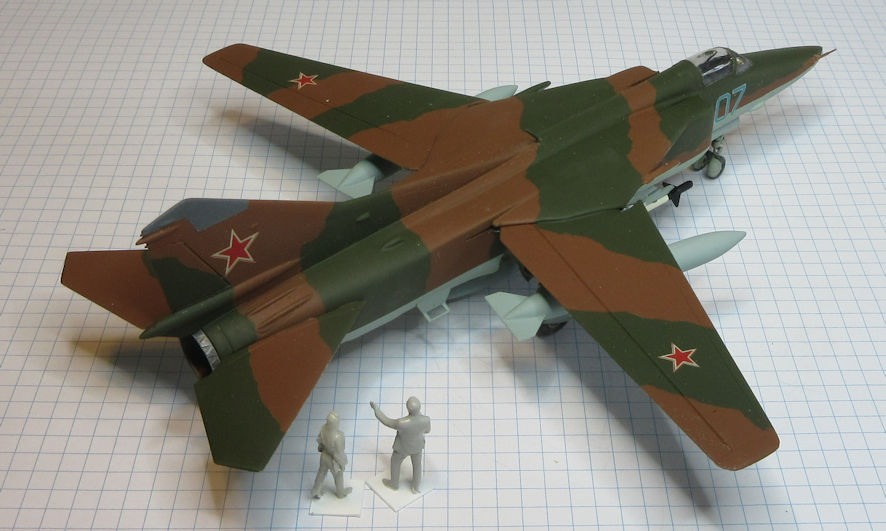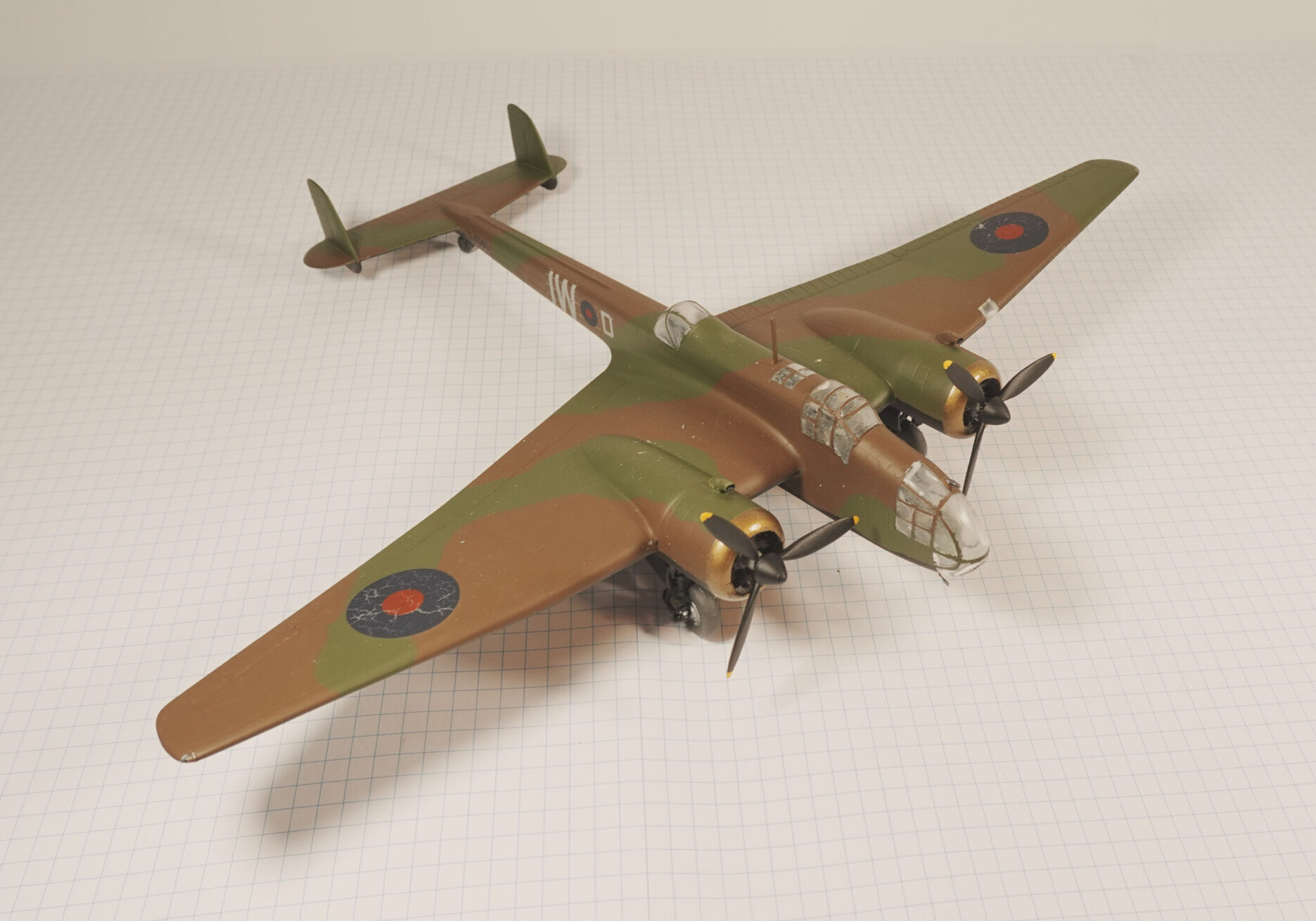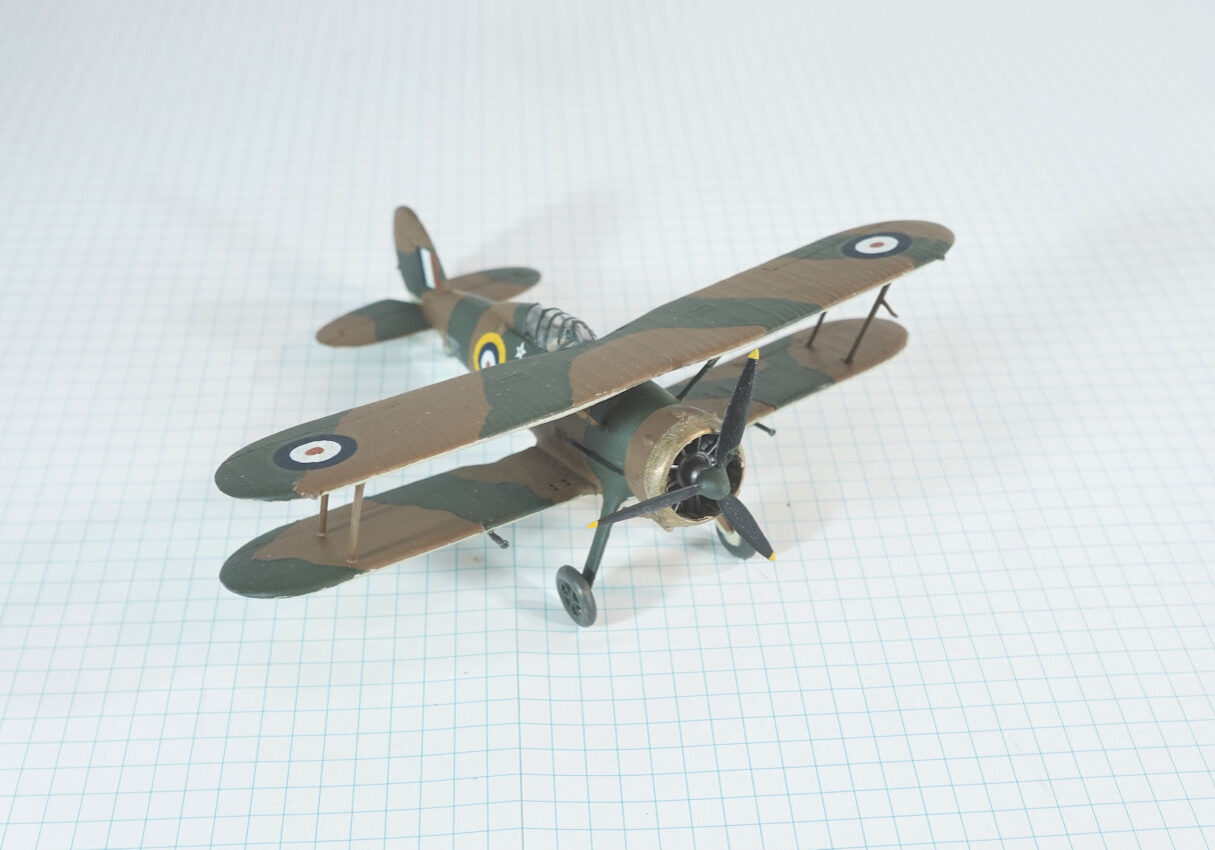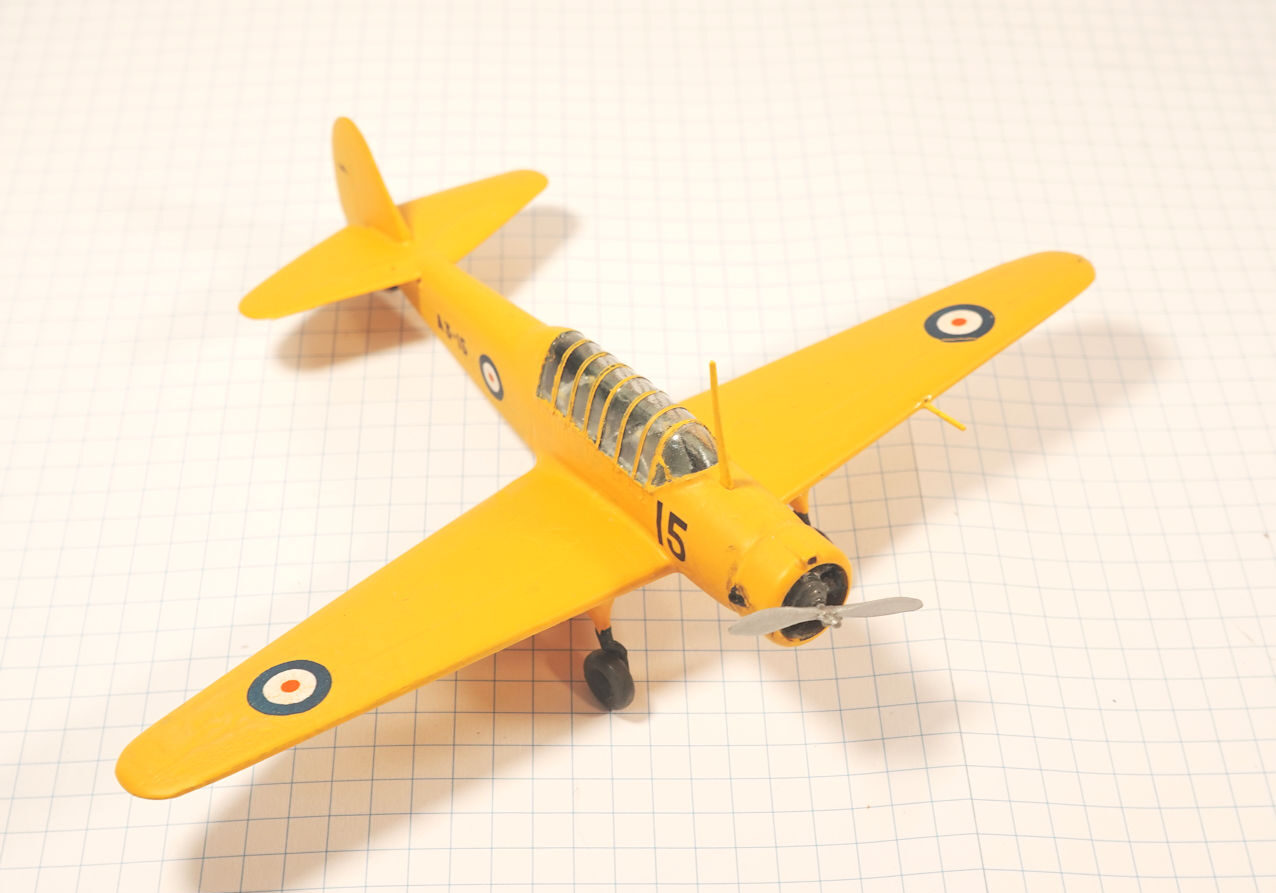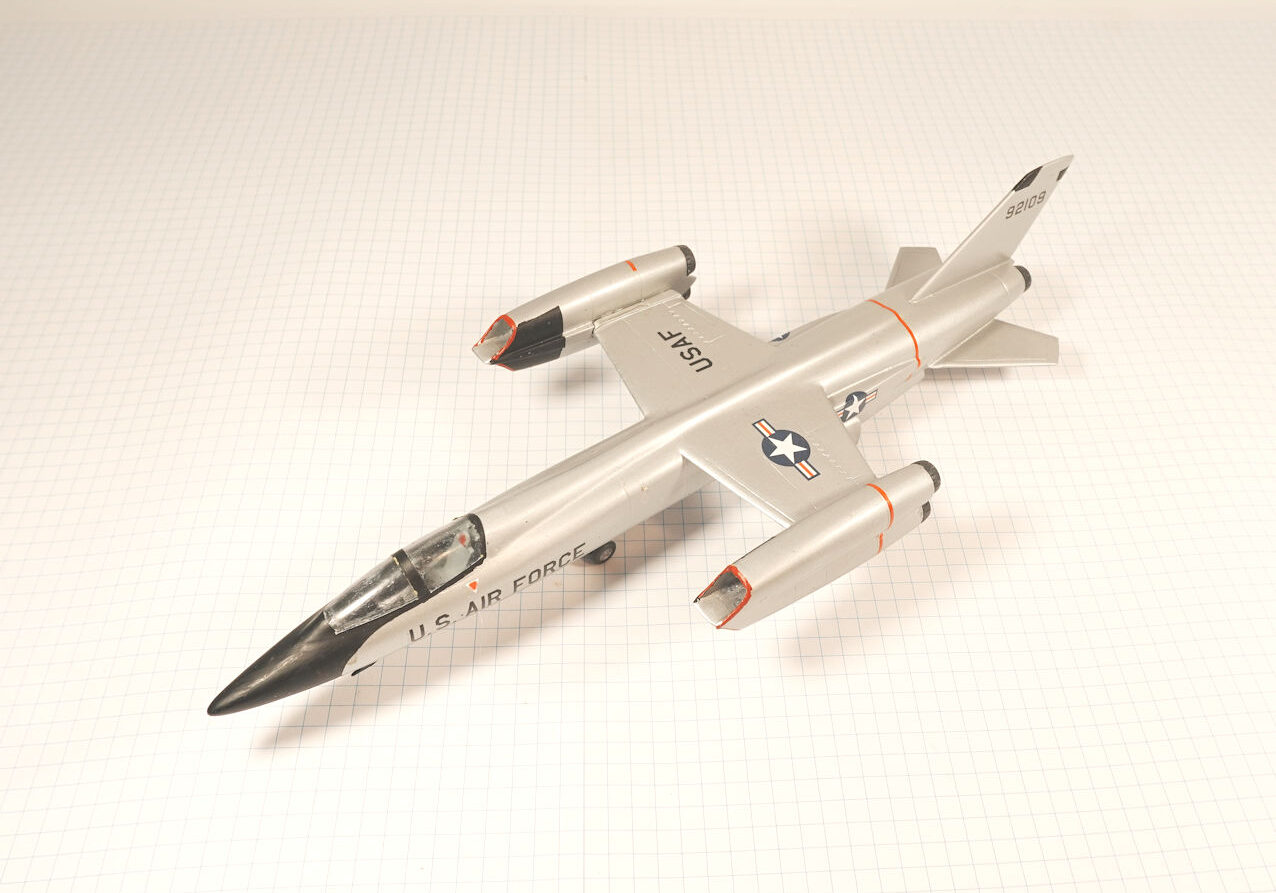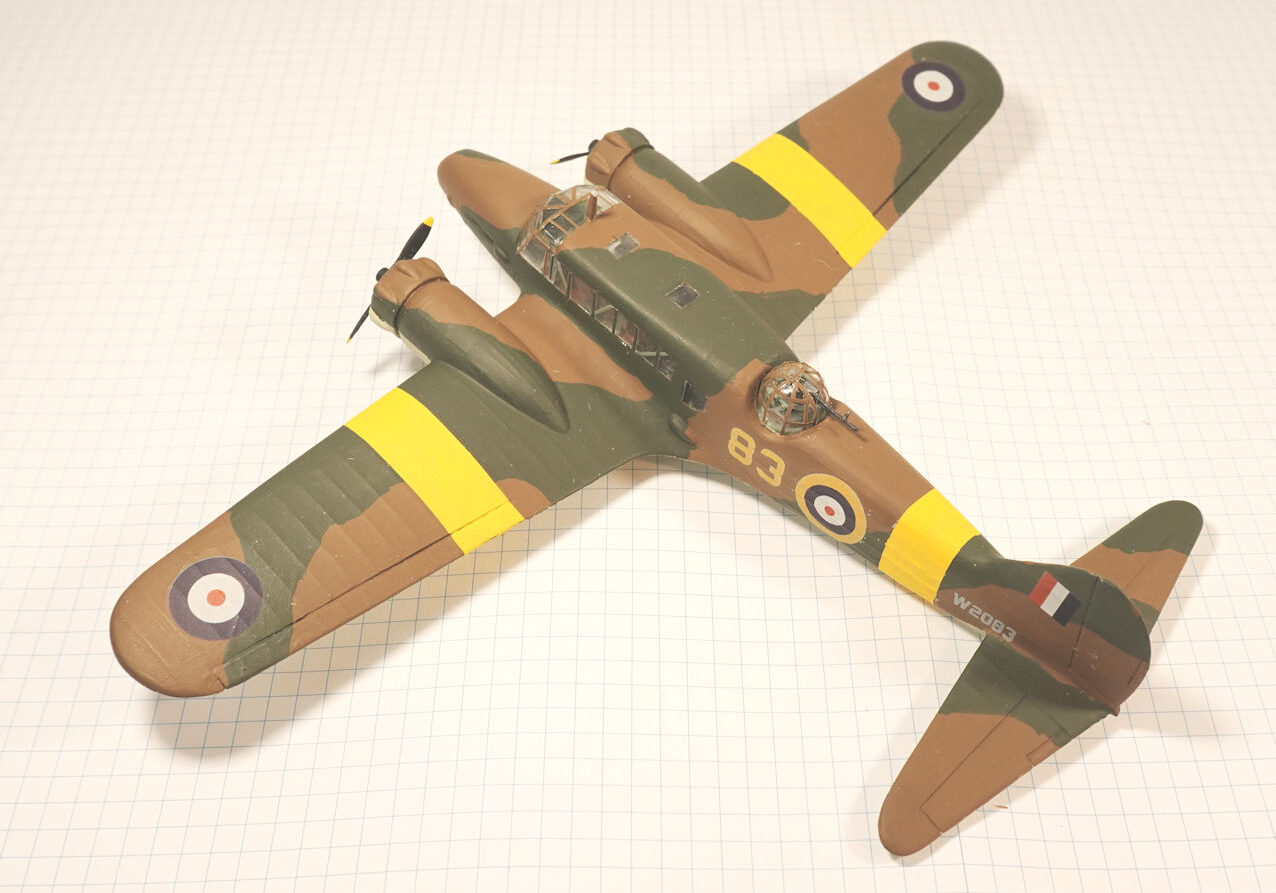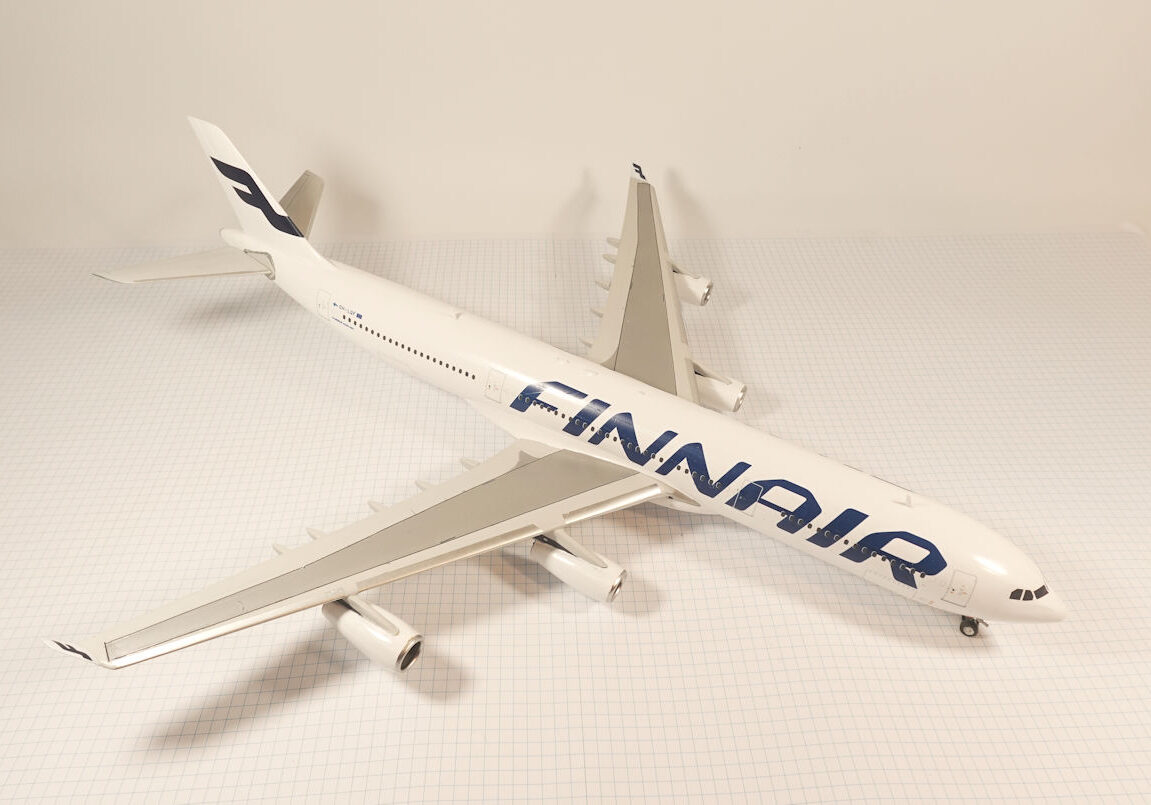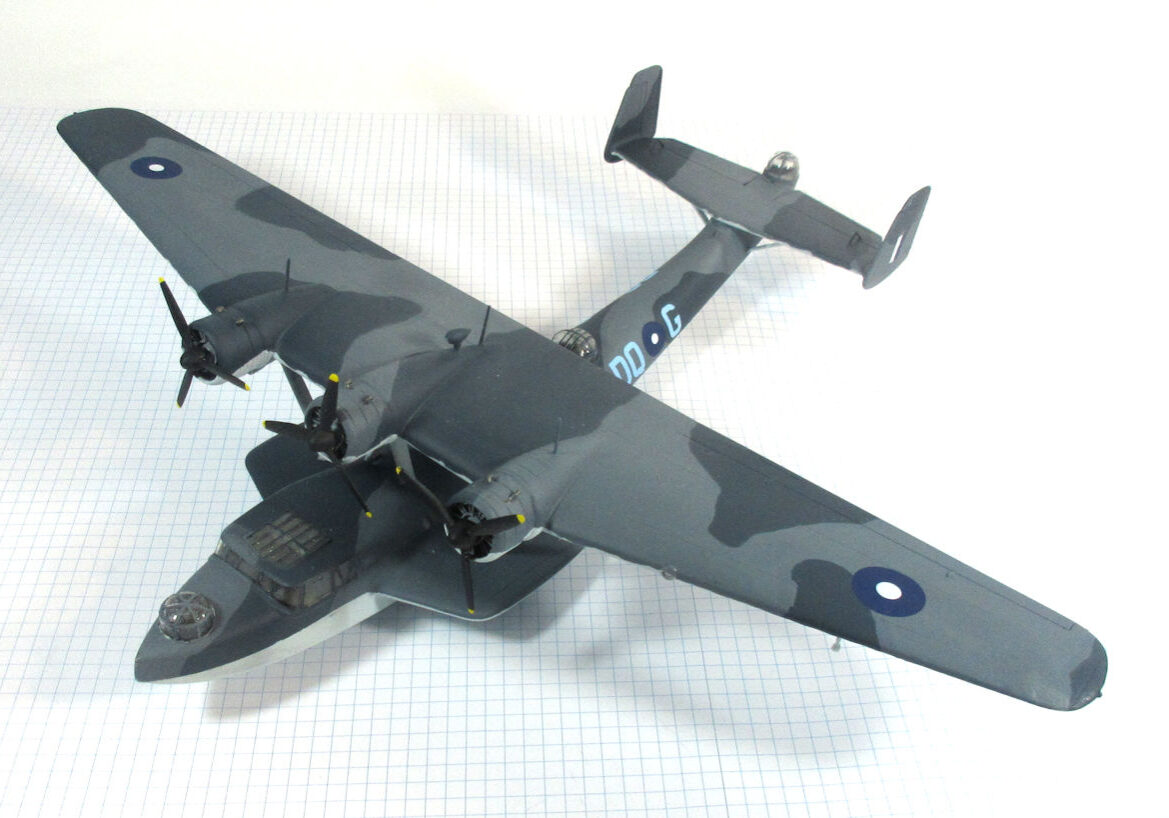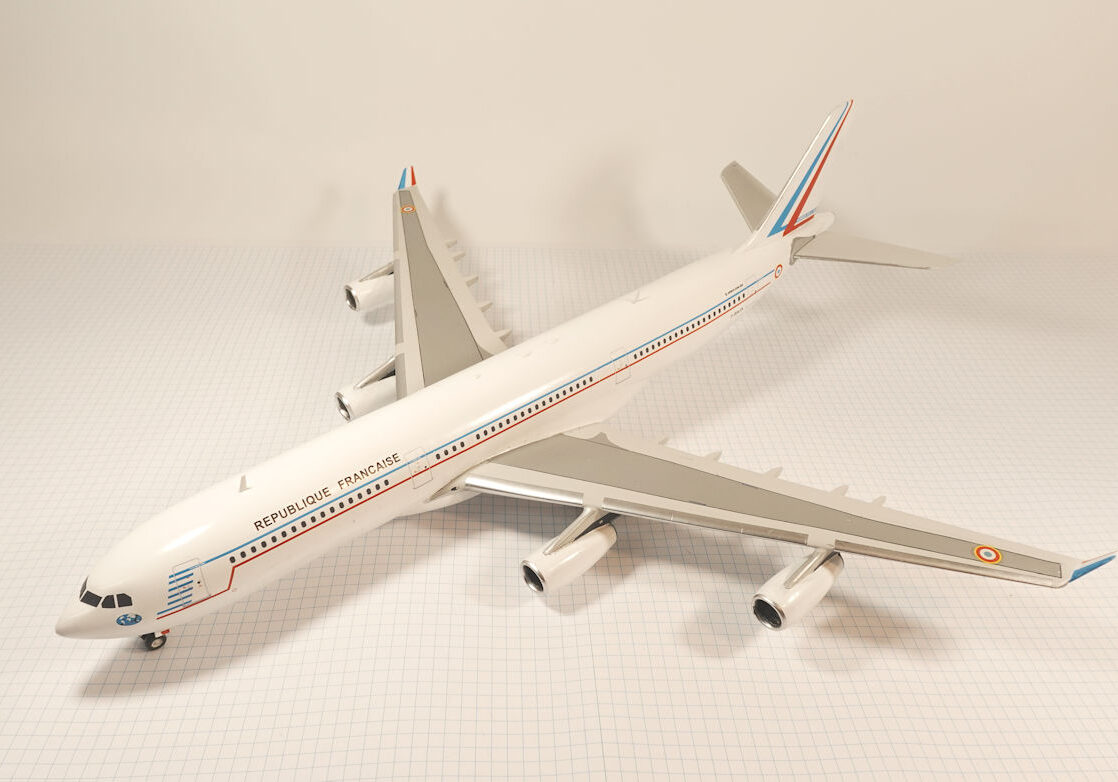History
The MiG-27 became the USSR’s main ground attack aircraft from the early 1980s. The swing-wing was an innovation popular in the 1960s and 1970s which combined high performance with low landing speed.
The MiG-27 was the ground attack version of the MiG-23 fighter which had similar features but a different nose and engine so each version was optimised for the role it performed.
The swing-wing allowed the aeroplane to operate from short and rough landing strips, liberating it from the need to use long concrete runways that would be a first target in a major war.
Development of this type began in the 1960s and the first version began operating in 1973.
It was estimated that by 1984 the Russians had 31,000 MiG-23s and MiG-27s in service and they also served with Warsaw Pact air forces. Later they also served with many other air forces.
This model represents a Mig-27 (Flogger-D) assigned to the Leningrad Army Command.
Hasegawa 1:72 kit. Completed in May 1998.

